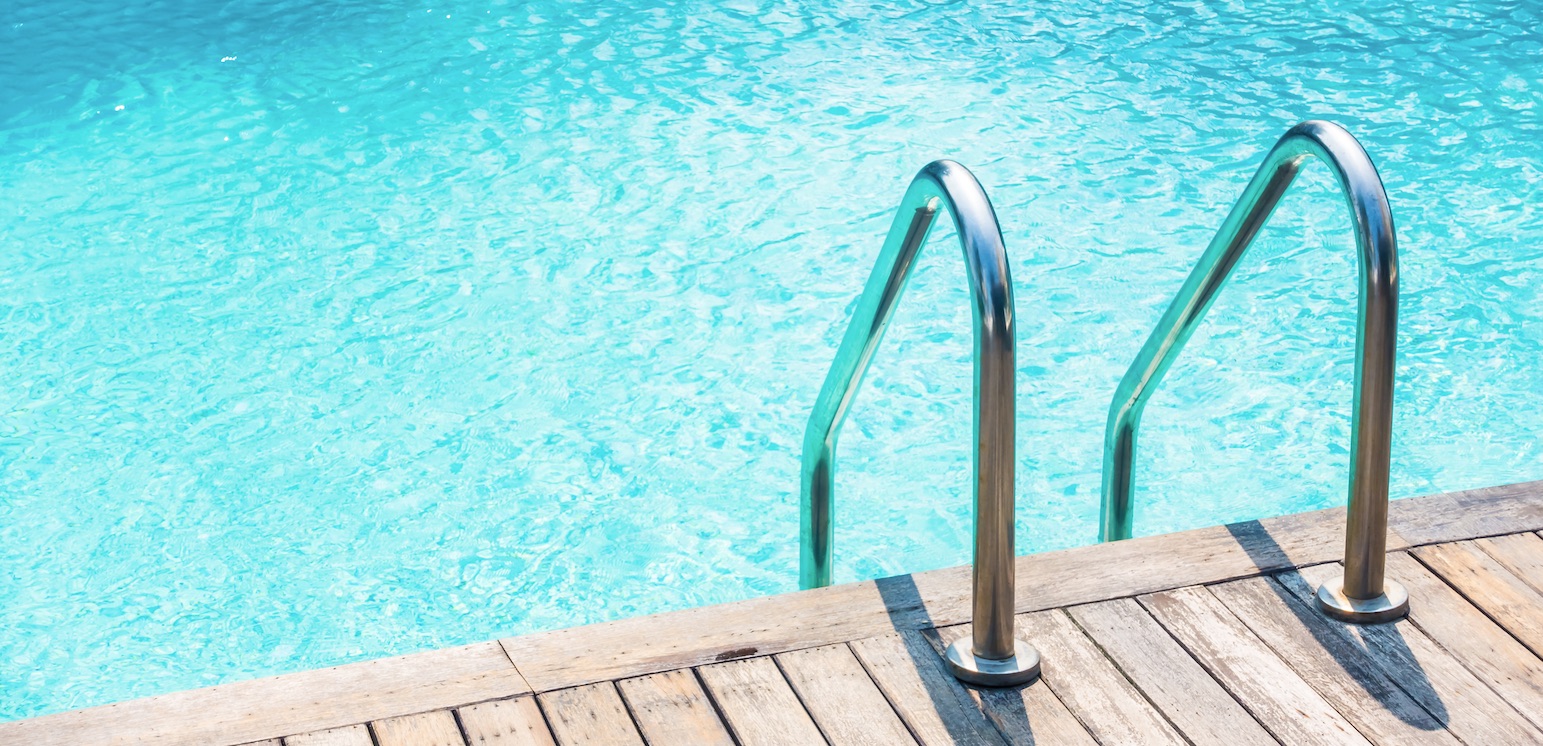Perlite Filter Aid - Its Use in Swimming Pool Filters
No homeowner or hotel guest wants to look at murky pool water, let alone swim in it. Cloudy water, however, can be an even more disturbing sight to service tech because when the water isn’t clear, it means something’s wrong with the pool. That something could include the filter medium. It’s the medium’s job to remove even the smallest particles of dirt from the water that passes through the filter And some media may do this better than others, depending on the pool, how it’s used and how it’s serviced.
Professional service techs rely on a variety of chemicals and equipment to keep customers’ pool water crystal clear— and none, perhaps is more important than the pool filter: Without it, techs probably would lose the battle against dirt and debris. Now to expand the available arsenal of weapons, manufacturers have introduced new filter media that can be used in place of DE / Kieselguhr and sand.
Like diatomaceous earth (the most commonly used medium for precoat pool filters, Perlite derives from a natural resource that has taken centuries to create a siliceous volcanic rock similar in nature to quartz and opal.
Milled Perlite has long been used as a filtering aid and anti-caking agent in the pharmaceutical distilling and food-processing industries. But not until the past 20 years or so has the material been put to use in the pool industry.
How did this material make its way from volcanoes to pool filters? Why can it improve your filter’s performance? And perhaps most importantly, what effect does the use of Perlite have on your pool maintenance routine?

A man made evolution
The key to Perlite as a filter medium is its lightweight. In its natural state, the mineral contains 2- to 6-percent trapped water.
In the manufacturing process, this water is released as the Perlite is heated to a minimum of 1000 degrees C. At this temperature, the water vaporizes and the mineral bursts open, leaving an irregularly shaped particle with multiple air pockets where the water once was hence the light weight.
This heating process serves a dual purpose: One is to make the Perlite lighter in weight; the second is to increase its overall volume – by as much as 20 times. (A good way to visualize this is to imagine how heat forces a popcorn kernel to explode, resulting in a lightweight morsel of an odd shape and size.)
Once heated, the expanded particles are then milled into a fine powder that can be introduced to the pool filter grid. Part of perlite’s appeal in the pool service industry is that preparing the slurry used to add it to the pool’s skimmer is as simple as measuring DE.
In fact, it’s virtually the same process: If you use 12 doses of DE / Kieselguhr from a 1-pound coffee can, then you also would use 12 doses of Perlite from a 1-pound coffee can. The amount of Perlite required, however, is based on volume, not weight, so it will not be as heavy as the DE.
(Always refer to the manufacturer’s instructions for specific amounts needed in any given filter.) “Using the same size measurement you would with DE / Kieselguhr is nice because people don’t have to change their habits” says Gene Beaulieu, president of Blue Dolphin Pools in Hooksett, N.H.
Weighing the benefits
Another benefit of Perlite, say techs, is the way in which it simplifies the backwashing process. As discussed in the first article on non traditional filter media (see P/SN, Oct. 1, p. 112), DE is an inert substance that does not decompose over time. Rather, it builds up wherever it is deposited, which can cause problems in the sewer pipes where pool water may be discharged. According to manufacturers, Perlite easily washes away from most any object.
“Because it is a lighter product than DE / Kieselguhr , Perlite doesn’t stick to the filter grids and bind them as easily, which makes the filter easier to backwash”, confirms Chad Harrison, owner of Patio Plus, a Panama City, -based service firm.
Perlite also can lengthen the time between backwashes, says Roger Baily, co-owner of Marion Pools Inc., in Marion, N.C. “The biggest difference I’ve noticed between Perlite and DE / Kieselguhr is that I get sparkling-clear pools and much longer filter runs”, he says. “I don’t have to break into the filters as often, which is messy and takes time”.
But the material’s lightweight also can be a drawback, say many techs.
“It tends to float when you introduce it to the pool, so you have to almost waterlog it before adding it to the skimmer,” Beaulieu reports. “While it doesn’t fall down like DE / Kieselguhr, I like it when I lift the bag because it’s so light.”
Clearing up biguanides
In addition to cutting back on back washing efforts, some techs say the medium makes working with biguanide pools more pleasant. Typically used in conjunction with an oxidizer such as hydrogen peroxide, biguanide is a disinfectant that kills bacteria by breaking down their cell membranes. But because the disinfectant is also a natural flocculant, it can cause DE / Kieselguhr to cake in the filter, reducing water flow and often making the pool water cloudy. But this cloudiness can be resolved when Perlite is used as the filter medium, say techs and manufacturers.
“I started using Perlite because I was having problems with DE / Kieselguhr filters clogging up pools where I use biguanides,” says Baily. “And the Perlite seemed to work better. In fact, I was so impressed that I began using it on my own pool”.
Beaulieu has had the same positive experience with the medium and actively recommends Perlite to his biguanide customers. “I can’t say that DE / Kieselguhr wont work on biguanide pools, but Perlite is the choice for me” he says.
To assess perlite’s performance with biguanides, Zeneca a Wilmington, Delaware-based biguanide manufacturer-conducted a study in 1995 in which it ran several tests to determine if one filter medium was more conducive to a biguanide sanitizing system than another.
Test pools using DE / Kieselguhr, cellulose fibre and Perlite as the filter media were set up to evaluate water quality. According to Zeneca’s results, both Perlite and cellulose fibre performed as well as DE / Kieselguhr. But Perlite seemed to clear up cloudy water more quickly than DE / Kieselguhr and was also able to maintain that clarity with less effort.
(Note: Zeneca also reported that while the cellulose fibre needed the aid of a flocculants to help clear up the water, it still did a better job at maintaining water clarity than did DE / Kieselguhr.)
Getting the word out
Overall, many techs say they are convinced of perlite’s ability to work well in the pool environment. “Some of my customers insist on it”, comments Baily, adding that he goes to the trouble of stocking the Perlite himself because his local distributor doesn’t carry it.
This supply concern was also voiced by Beaulieu and Harrison. Because Perlite is still relatively new to the pool industry, distribution is rather limited at the moment.
And unfortunately, this lack of supply and demand is self-perpetuating, notes Beaulieu. “There are not a lot of distributors carrying Perlite in the Northeast, and I think that curtails its exposure in the industry,”, he says. “Getting it into the market seems difficult because so many people are sceptical of using a new product”, adds Harrison.
Convincing customers of perlites filtering ability, however, takes no more effort than a personal testimonial, declares Beaulieu. “If I use Perlite on my pool, then I am definitely going to sell Perlite to my customers” he says. “I want to offer them the same quality of water I have in my own pool. Wouldn’t you demand that?”
For more information about these and many other uses of
Perlite please call or contact us or our distributors
Like other siliceous volcanic rocks, some Perlite products contain crystalline silica, which has been linked to the lung disease silicosis. The amount of this substance in Perlite is often less than 1 percent by weight, which is far less than the 60 percent by weight contained in DE./ Kieselguhr (For more information on DE / Kieselguhr and silicosis, see P/SN, Oct. 1, p. 112.) This stark difference could lead one to assume that Perlite poses less of a health threat – and indeed, that was the result of a 1994 study of Perlite industrial and mining workers conducted by Dr. Hans Weill of Tulane University in New Orleans. In his report, Dr. Weill noted that there wasn’t any evidence to indicate an increased incidence of silicosis among these workers than there was among the general public. What’s more, the American Conference of Governmental Industrial Hygienists only classifies Perlite as a “nuisance dust”. The group of health-care experts does, however, advise Perlite users to exercise common sense when using the product to avoid skin or eye irritation and to avoid directly inhaling it. – A.B.E.




